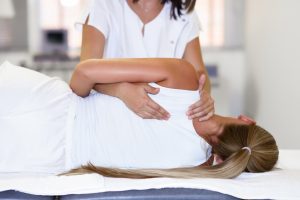 We often talk about the different orthopaedic surgical procedures available at One Hatfield Hospital. But of course there are a number of non-surgical treatments that may be sufficient to provide long-term relief from symptoms.
We often talk about the different orthopaedic surgical procedures available at One Hatfield Hospital. But of course there are a number of non-surgical treatments that may be sufficient to provide long-term relief from symptoms.
We spoke to Mr Rajeev Sharma, Consultant Orthopaedic Surgeon, Upper Limb to tell us more about the non-surgical treatments he sees his patients benefit from.
How often does the patients journey result in having a surgical procedure for their shoulder or elbow pain?
This is far less than one assumes. The extent and duration of the problem and the relevant diagnosis can warrant a surgical intervention. However, patients will usually be given a robust trial of non-surgical treatment which will work for the majority.
In the first instance I would advise life style changes such as avoiding sports or anything that makes symptoms worse, and taking regular breaks from repetitive tasks that can aggravate. A combination of rest, a sling for immobilisation, applying cold packs and taking anti-inflammatory medication may all be of benefit. A physiotherapist can advise exercises to restore strength and range of motion.
Can a condition be fixed with lifestyle changes and physiotherapy alone?
Absolutely. Musculoskeletal physiotherapists can treat many problems associated with muscles, bones, nerves, cartilage, tendons, ligaments and joints. This may be through movement and exercise, or by the use of treatments such as shockwave therapy, ultrasound massage, or acupuncture. But if there is no improvement after a period of around 6 weeks, injection therapy may be the next appropriate step.
What is injection therapy?
Steroid injections are one option. They use a medicine called corticosteroid. They, somewhat confusingly, can also be called corticosteroid, cortisone, or hydrocortisone injections, or may be referred to as injection therapy. They work by reducing inflammation. They can help reduce pain and swelling to help you move your joint more easily, enabling physiotherapy to build muscle strength, fix the underlying problem and prevent symptoms from returning. While one injection should suffice, it may be possible to have repeated steroid injections. Your consultant can advise if more injections are the best course of action.
Increasingly, PRP (Platelet Rich Plasma) injections are being recommended. PRP injections are a relatively new technique to treat damaged cartilage, tendons, ligaments, muscle and bone by stimulating the natural healing process with your own blood. Your blood is drawn and then treated to separate the healing platelet rich plasma. The plasma is injected back into the affected area to stimulate cell repair and trigger the healing process. The stimulated healing relieves pain, reduces inflammation and improves joint function.
Is it important to rest afterwards?
After an injection you will need to avoid strenuous activity for 24 – 48 hours, but can return to driving and normal work after a very short time if the pain of the initial condition is not too bad. The most important element following injection therapy is physiotherapy and exercise to build strength.
What are the common conditions that may benefit from injection therapy?
In the shoulder, the benefits of steroid injections are seen in conditions like impingement, bursitis, frozen shoulder occasionally and some rotator cuff problems. In the elbow, steroid injections can be very beneficial for tennis elbow if treated early. PRP injections are also very beneficial for tennis elbow.
When would injection therapy usually be recommended?
Injection therapy would usually only be recommended in acute conditions and much early on in the presentation of the problem. They work very well when given early. Chronic and long standing issues have less benefit.
If there is no improvement following injection therapy, then surgery needs to be considered


 One Ashford
One Ashford One Hatfield
One Hatfield